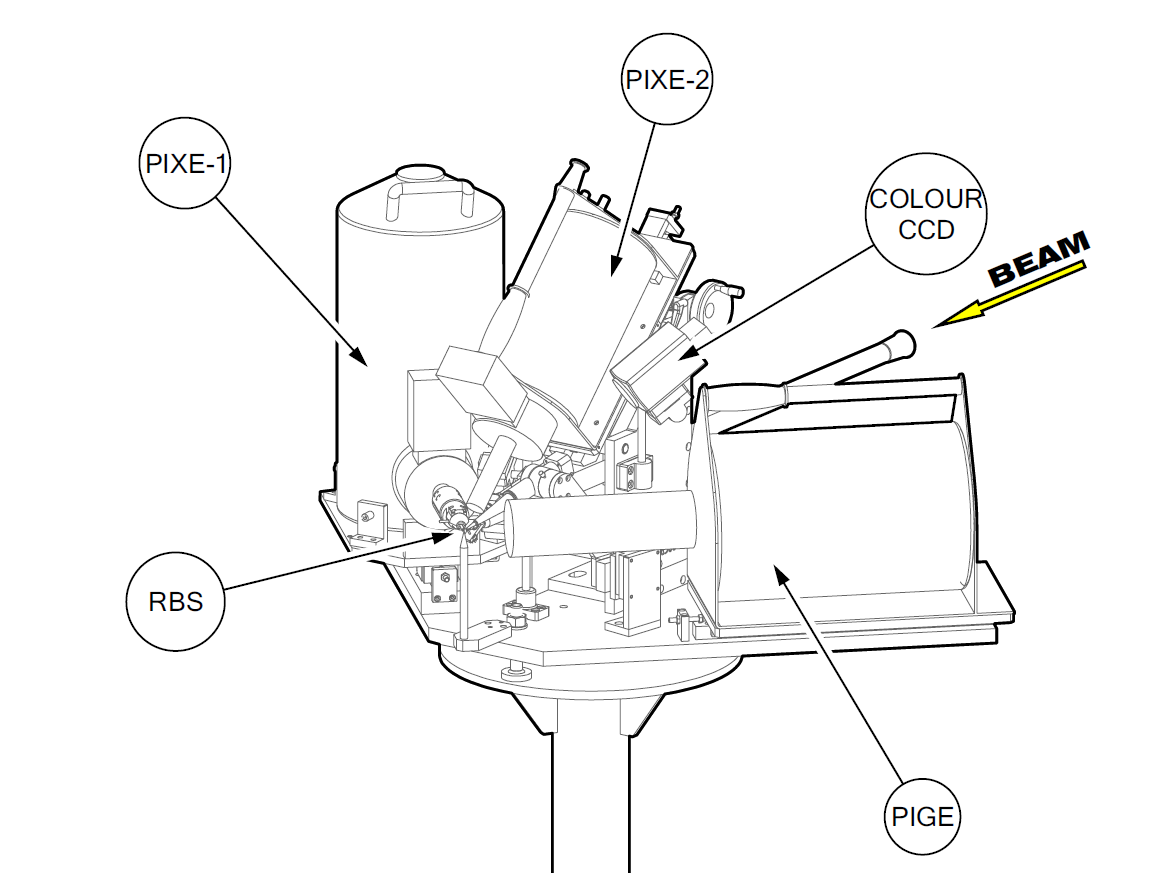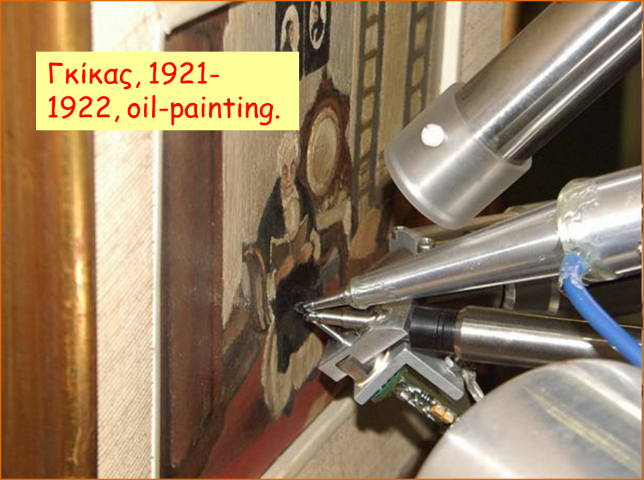The facility was supported by PEP Attikis Framework, Project ATT-29, 2006-2008. The external ion-beam analysis end-station integrates the analytical capabilities of the PIXE, RBS and PIGE ion beam analysis techniques in one experimental set-up, in order to attain a complete elemental and near surface structural characterization of samples in an almost non-destructive way and without any limitation concerning their size or conductive state. A careful 3D mechanical drawing optimized the set-up experimental parameters achieving probe dimensions at the millimeter range (~1 mm2) and fulfilling the special requirements imposed for optimum performance of the aforementioned techniques, including the possibility to use heavier, than protons, ion beams.
In more specific, the external ion-beam setup utilizes simultaneously four spectrometers; two for the implementation of PIXE, one for RBS/NRA, one for PIGE, whereas a miniature X-ray detector for dose monitoring purposes is also employed. The exit ion-beam nozzle through appropriate collimation confines the ion beam dimensions (in a diameter of 1mm at the analysis point), whereas the selected exit window (100 nm Si3N4 thin film) minimizes the ion beam energy loss and the straggling effect. Furthermore, the short distance (5mm) that the charged particles travel across the air path also maintains the excellent features of the incident charged particle beam. The geometrical arrangement of the detectors was optimally designed in order to allow: (a) a simultaneous utilization of two X-ray detectors for PIXE measurements, the one being in Helium atmosphere and the other one with ‘hard’ filtering in order to achieve combined detection of major, minor and trace elements, (b) a surface barrier detector placed inside a special constructed vacuum chamber for the RBS/NRA mode, (c) detection of prompt γ-rays induced by nuclear reaction on the isotopes of the low atomic number elements that compose the sample (e.g. Li, B, F, Na, Mg, Al and Si), (d) precise dose normalization by means of the Si-K signal emanating from the silicon nitride exit window and (e) visual inspection of the analysis area and tools for easy and reproducible alignment of the sample/artefact with respect to the particle beam. For the data acquisition, two Xilinx Xtreme DSP Development kits for Virtex-4 SX cards were used. The visual inspection of the analysis area is achieved by means of a CCD camera and two proper aligned laser pointers enabling easy and reproducible positioning of the sample/artefact with respect to the ion-beam and the detection systems


A schematic drawing of the External Ion Beam Analysis end-station (left) and during the analysis (right) of the contemporary Greek painter Gkikas, in collaboration with Benaki Museum and Thetis Authentics LtD in the framework of PEP Attikis project, ATT-29, 2006-2008
